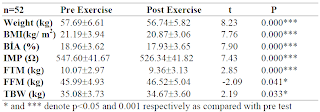Low Fat Dairy no more! Milk Fat Protects Women from Myocardial Infarction.
Do you like your 0.1% yogurt? No? Well, what if I told you that it ain't even healthy? A recent study from Sweden ( Warensjö. 2011 ) shows that milk fat is heart healthy! Particularly in women. The study population comprised roughly 1000 Swedish men and women, whose anthropometric, biomarker fatty acid, physical activity, and dietary data were collected and comparisons were made between people with previous myocardial infarctions (cases) and healthy age-mates (controls). In women, proportions of milk fat biomarkers in plasma phospholipids were significantly higher ( P < 0.05) in controls [i.e. healthy individuals] than in cases and were, in general, negatively, albeit weakly, correlated with risk factors for metabolic syndrome. [...] After multivariable adjustment for confounders, the inverse association remained in both sexes and was significant in women. In agreement with biomarker data, quartiles of reported intake of chees...








